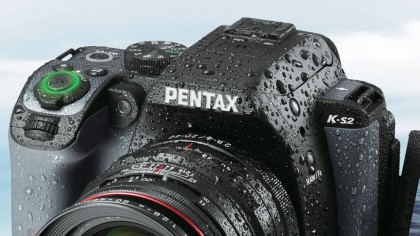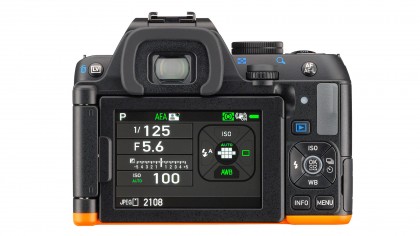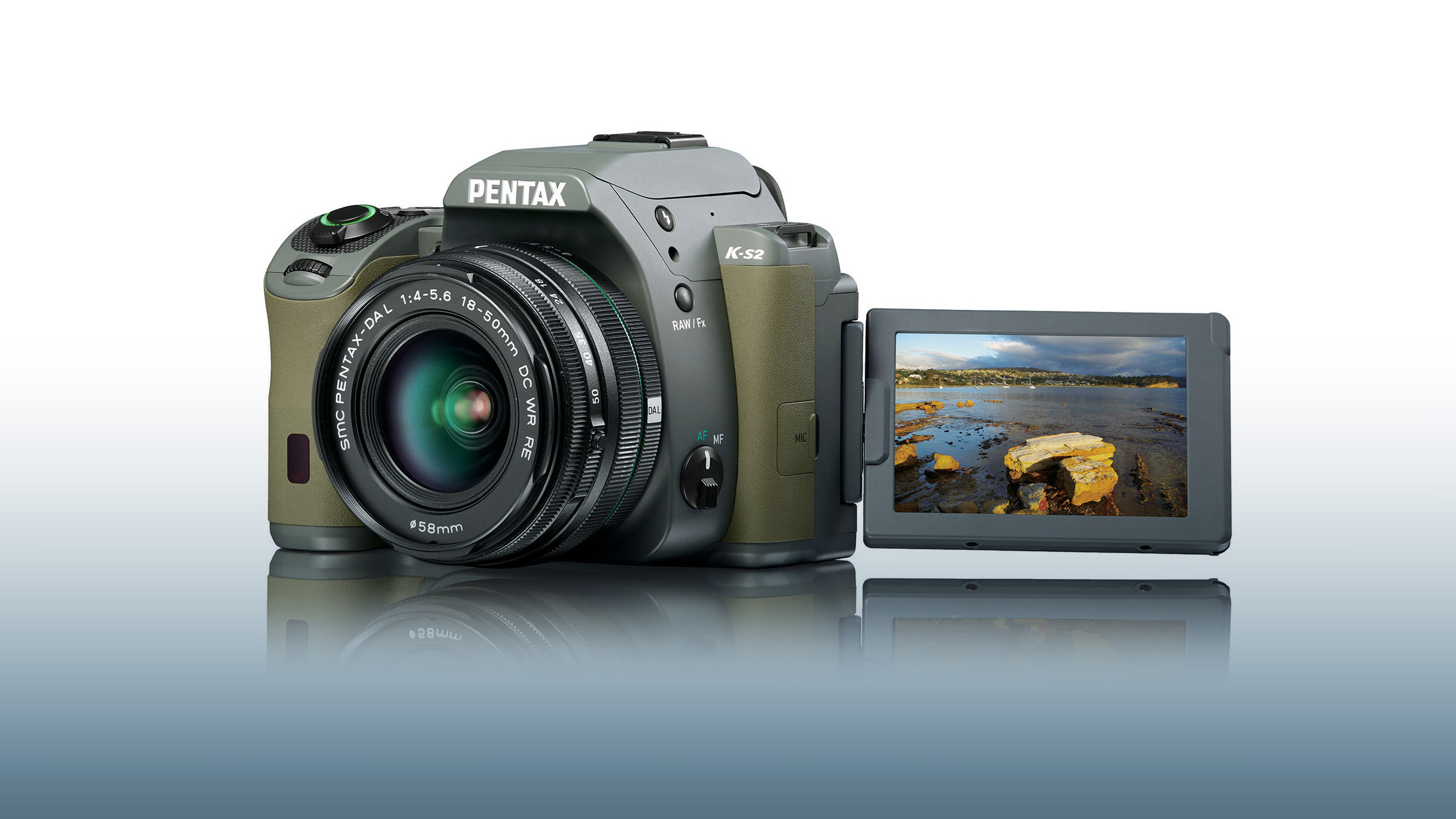Why you can trust TechRadar
It's the smallest weatherproof DSLR on the market, and the K-S2 has a diminutive size which makes it feel almost more akin to some of the larger compact system cameras on the market. Furthermore, the kit lens and some other lenses which you can buy for the system are also pretty small, making it a good choice if you're concerned about weight and size.

You need to hold down a small button on the side of the retracting kit lens to extend it before you can take your first shot. This can add a couple of seconds to shooting time, so if you're planning on taking a few shots, it's best to leave it extended. To zoom in and out, you rotate a small ring on the front of the lens – it takes a bit of time to get used to the positioning of this ring, especially as the focusing ring directly behind it is roughly the same size. At times, I found it quite frustrating, when compared to the much larger, easier to find zoom rings of other kit lenses.
Control layout
The K-S2 has quite a small grip when compared with other cameras of its kind. However, it still feels pretty comfortable in the hand, with a small indent allowing your middle finger to rest nicely. The two scrolling dials – one on the front of the grip, and the other on the rear – make changing the settings feel easy and natural.
Both of the dials control a different function, depending on which exposure mode you're currently using. In manual exposure mode, the front dial alters shutter speed and the rear dial alters aperture. If you're working in shutter priority mode, only the front dial will work – and the opposite if you're working in aperture priority. The good news is that if you prefer to work in a different way, you can customise how each of the scrolling dials work in different exposure modes via the main menu.
The vast majority of the KS-2's buttons are on the right hand side of the camera, which means it's pretty quick to make changes with just one hand. There are however, some buttons on the left side, notably the Live View button. There are a couple more on the side of the camera, including the AF/MF switch. A customisable button marked 'Raw/FX' allows you to choose from one of six different functions (when shooting).
One of the most useful controls on the camera is the green button on the top-plate, just behind the shutter release button. This restores certain settings (such as exposure compensation) back their defaults.
Wi-Fi and NFC
There's also a button on top of the camera which you can hold down to activate the camera's Wi-Fi system. Using the app and connecting to the camera from your smartphone or tablet is very easy. If you have an NFC enabled phone, you simply hold the two devices together and – if it's the first time you've done that – you'll be prompted to download the free Image Sync app. Alternatively, if you have a Wi-Fi only phone (such as an iPhone), you can download the Image Sync app from the App Store and connect to the camera's Wi-Fi in your phones setting.

Pressing the 'info' button on the back of the camera gives you access to a quick menu which helps you to change certain key settings more quickly, such as Custom image, JPEG quality and metering settings. It would have been nice if you could customise this menu depending on how you like to work best, though.
Once you're connected, the app is excellent to use. It gives you complete control over pretty much all of the camera's settings, which is refreshing to see and genuinely useful. The only things you can't change are mechanical, such as whether the flash is raised, or the focal length of your lens. It's also fairly easy to transfer images across to your phone for sharing on social networks, once you get the hang of how to select and download a photo.
Although it's nice to have a 100% viewfinder, as it is optical rather than electronic, it means that you won't be able to see any changes made to settings until you look at the shot on the LCD afterwards.
Amy has been writing about cameras, photography and associated tech since 2009. Amy was once part of the photography testing team for Future Publishing working across TechRadar, Digital Camera, PhotoPlus, N Photo and Photography Week. For her photography, she has won awards and has been exhibited. She often partakes in unusual projects - including one intense year where she used a different camera every single day. Amy is currently the Features Editor at Amateur Photographer magazine, and in her increasingly little spare time works across a number of high-profile publications including Wired, Stuff, Digital Camera World, Expert Reviews, and just a little off-tangent, PetsRadar.

